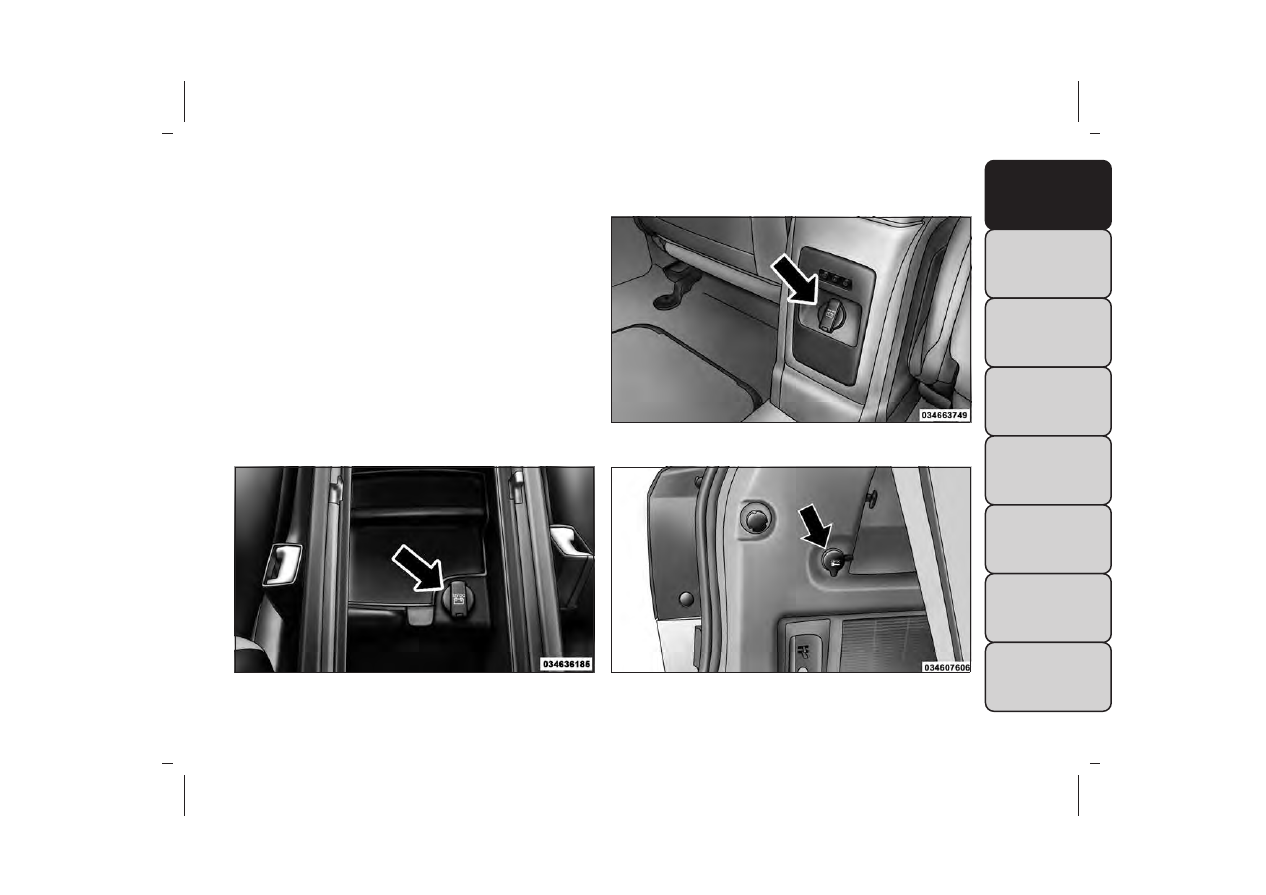Fiat Freemont (2016 year). Instruction - part 8

A second 12 Volt (13 Amp) power outlet is located
inside the center console storage area. Power is avail-
able with the ignition switch in the ON/RUN, ACC or
LOCK position.
(fig. 83)
A third fused 12 Volt power outlet is located on the
back of the center console. This power outlet has
power available when the ignition switch is in the
LOCK, ON or ACC position.
(fig. 84)
A fourth fused 12 Volt power outlet is located on the
left quarter trim panel in the cargo area. This power
outlet has power available when the ignition switch is in
the ON or ACC position.
(fig. 85)
(fig. 83)
Center Console 12 Volt Power Outlet
(fig. 84)
Rear Seat 12 Volt Power Outlet
(fig. 85)
Rear Cargo Area Power Outlet
113